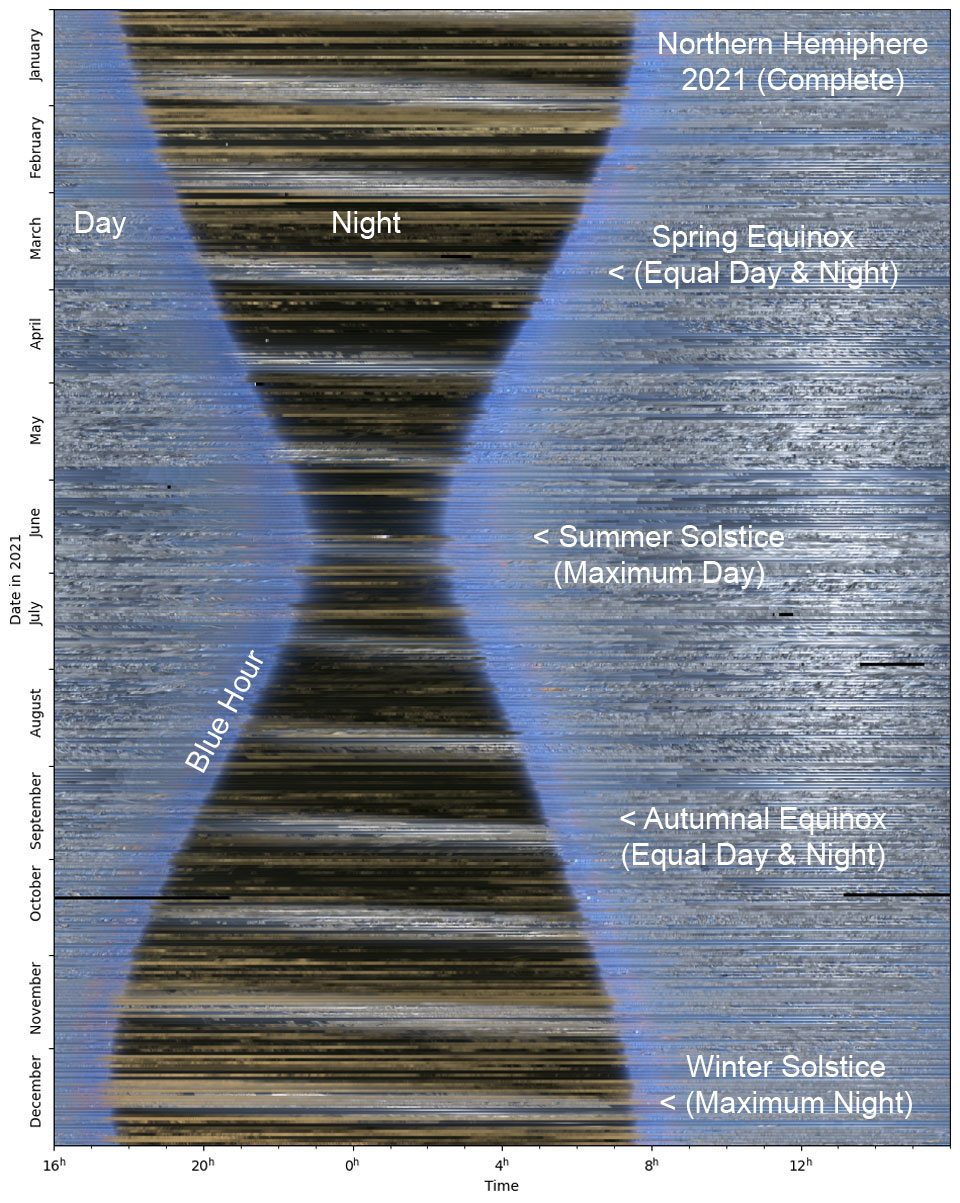XgeoX wrote: ↑Wed Mar 23, 2022 5:20 am
If you crop it for 18 months you get a sexy lady!
Eric
I don't know the definition of keogram. A quick search does not find it in a dictionary or Wikipedia or Wiktionary. I wonder who coined the term, and if it is named after someone, or if "keo" is a reference to something. Some of the links in the caption give a definition by example. From them, I would say that the definition could be:
a form of image sampling that plots one part of a set of still images (consistently the same part, such as one given vertical column), and then plots a sequence of these parts on the plane using one axis as a time axis.
So, the examples that were given of keograms in the links took a given column out of a bunch of photos, say one every 5 minutes over the course of a day and lined them up, placing each different photo sample from left to right. A single day example is below.
AllSkEye User Documentation has a lovely description at:
https://allskeye.com/userdocs/index.htm ... nction.htm
with these images:
The top image shows one moment from an all-sky camera and a vertical column that is chosen as the sampled set. That same vertical column gets placed in the image below, and it moves to the right and does it again and again over the course of 24 hours.
But if that is a keogram, then, today's APOD is a keogram of keograms. Perhaps we'd call it a keogram-squared, or maybe a keokeogram. It has taken a set of keograms, one for each day of the year, taken a horizontal slice consistently from each of them and plotted time again, now on the vertical axis as we go through the year.
It's fun to look at this. Two of the most obvious things were pointed out in the caption -- (1) you can see the change in the times of day/night over the course of the year, locating the equinoxes and solstices. (2) You can see the presence of the Moon.
Other things I can see are to watch the changes in the brightness of the moon and its timing from night to night. And there are a couple of lone spots in a few nights that look like stars. It's hard to say, but perhaps those nights managed to capture a bright star or a planet in their sample.
Actually, as I was exploring this and realizing you can seem more if you look at it a while, I came across the nice twitter thread from Cees Bassa, the creator of this APOD image, which I could have found if I had just clicked on his name in the credits of today's APOD. (
https://twitter.com/cgbassa/status/1479480674277068800)
A NOTE OF CORRECTION: The APOD caption says that today's image involved a sample once every 15 minutes, but according to the author's thread, it was actually once every 15 seconds. So this APOD involves a bit of data from 2.1 million images!
 The Sky in 2021
The Sky in 2021
